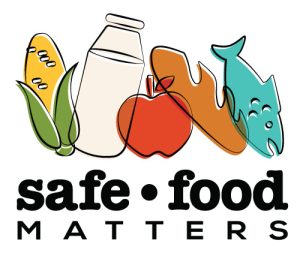The Pickle of Labelling GM Salmon and Foods, and How to Avoid It
Health Canada in May, 2016 approved a genetically modified animal (salmon) for human consumption. This food is the first of its kind in the world. A federal committee that looked at the issue has provided its report, which effectively includes a recommendation to not label GM foods.
The Standing Committee on Agriculture and Ari-Food stated it supports mandatory labelling “only when a risk to health has been established …”, and that “no risks to health have been identified for GM foods approved in Canada”. (7,8)
But of course no health risks can be identified, because GM ingredients can’t be traced. Why not? …Read More
SynBio, Gene Editing and Other New Stuff: Same Concerns, Supersized.
New words like “synthetic biology”, “GMOs 2.0”, “CRISPR”, and “new biology” are being heard. And new compounds are in our fragrances, flavourings, cosmetics and foods.
The new words are for new techniques of genetic engineering. What are the techniques and their products, and should we be concerned?
New Techniques
The old techniques of genetic engineering (GMOs 1.0) dealt with organisms, and inserted genes by either blasting them into an organism or transferring them via a virus. This was not very precise.
1. Gene Editing. A new technique is called “gene editing”. It is more on target. It can cut the genetic code of organisms …Read More
A BEEF ON LABELING: IRRADIATED MEAT GETS A LABEL; BUT GM FOODS DO NOT
Health Canada is going to allow the beef industry to irradiate beef: to blast it with radiation. But it insists that such beef be clearly labeled so that “consumers wishing to purchase irradiated ground beef would easily be able to identify it on store shelves.” [i]
However there is no requirement to label genetically modified foods. It is hard to understand why there is a requirement to label one but not the other, because they are similar in many respects. Here are the similarities:
Both Are Processes at the Molecular Level
Irradiation is a process, according to the Technical Summary[ii], that is applied …Read More
TO THE SALMON CONSUMER: I’M NOT BUYING IT.
Salmon that has been genetically modified to grow faster has been approved. Health Canada states “in every other way, the AquaAdvantage salmon is identical to other farmed salmon”. Not true. For one thing, it has higher levels of the growth hormone IGF-1[i] [ii], which is tied to several common cancers, including prostate, breast, colorectum, and lung[iii]. For another, some of the GM salmon show a statistically significant increase (1.5 fold) in allergen content. Lastly, the eggs are pressure shocked to produce an abnormality so that they aren’t fertile.
I’m not eating that fish. Would you eat that fish?
And these three points …Read More

